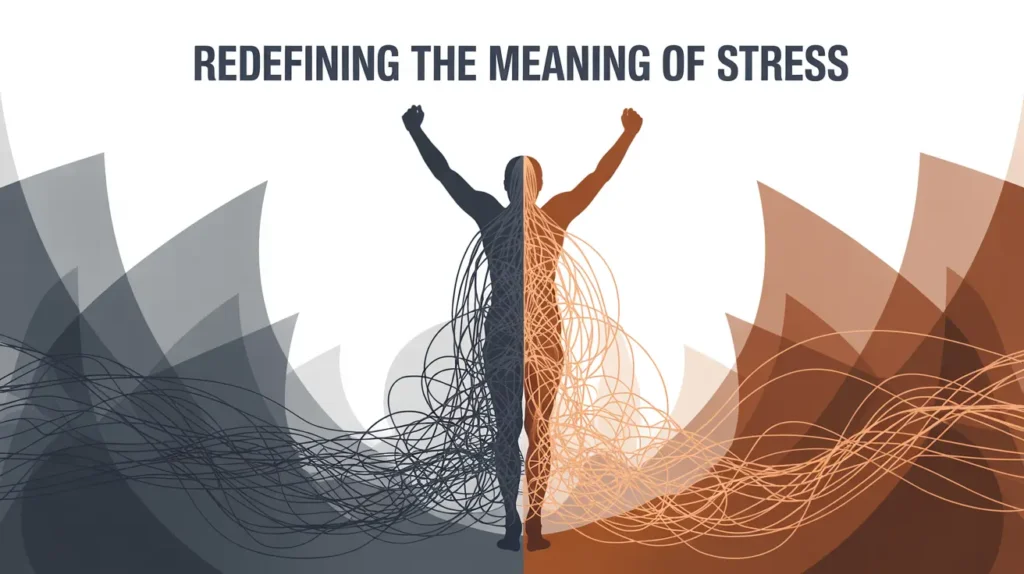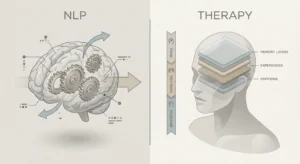Neuro-Linguistic Programming (NLP) empowers you to manage stress by retraining your brain to respond calmly to pressure. Using tools like reframing (shifting perspectives), anchoring (triggering calm), and state management (controlling emotions), NLP transforms stress into opportunities for growth. Practice daily to build resilience and clarity.
We all face stress deadlines, uncertainty, conflict, or simply the fast pace of life. But have you ever wondered why some people remain calm under pressure while others crumble? The answer lies not in their circumstances but in how their mind is programmed to respond.
This is where Neuro-Linguistic Programming (NLP) comes in. NLP isn’t just a communication model it’s a powerful toolkit for emotional self-mastery. It provides stress tools that help you understand, reframe, and redirect your mental and emotional patterns. Instead of letting stress control you, NLP teaches you how to take back control consciously and confidently.
Now, let’s explore why NLP stress tools are so empowering and how they help you build resilience, focus, and emotional strength.
Key Takeaways
- NLP helps you manage stress by retraining how your mind perceives and reacts to pressure.
- Core NLP stress tools reframing, anchoring, and state management convert negative emotions into productive energy.
- It works by reprogramming subconscious responses, helping you respond with clarity rather than panic.
- With consistent NLP practice, stress becomes less of a threat and more of an opportunity for growth.
Why NLP Is a Powerful Stress Management Tool

Traditional stress relief methods like meditation or exercise work on relaxation, but they don’t always change the mental pattern behind the stress. NLP, on the other hand, goes deeper. It helps you restructure your internal dialogue and mental imagery, transforming the very source of stress.
When you use NLP stress tools, you’re not escaping pressure you’re retraining your brain’s response to it. You learn to identify your triggers, replace anxiety-driven thoughts with empowering ones, and anchor yourself in calm confidence.
Core NLP Stress Tools and How They Empower You
| NLP Stress Tool | Purpose | How It Empowers You | Best Used When |
| Reframing | Change how you interpret stressful events | Turns “this is overwhelming” into “this is a challenge I can handle” | When facing setbacks or uncertainty |
| Anchoring | Create a physical trigger for calmness | Allows instant access to relaxation or confidence | Before meetings, presentations, or tough decisions |
| Swish Pattern | Replace stress-inducing thoughts with empowering imagery | Retrains your brain to associate stress triggers with control and composure | When recurring stressful thoughts appear |
| State Management | Control your emotional and mental state at will | Helps you choose how you feel in high-pressure situations | During stressful interactions or deadlines |
| Future Pacing | Mentally rehearse calm and successful responses | Prepares your mind for composure before stress arises | Before events you normally find stressful |
1. Reframing: Redefining the Meaning of Stress

NLP teaches that meaning equals emotion. The way you frame a situation determines how you feel about it.
For example:
- “I’m under pressure” becomes “I’m being challenged to grow.”
- “I can’t handle this” becomes “I’m learning new ways to adapt.”
By reframing stress as feedback instead of failure, you immediately reduce anxiety and activate your problem-solving mindset. It’s not what happens it’s how you interpret it that defines your response.
2. Anchoring Calmness on Demand
Anchoring allows you to install emotional control like a light switch.
Here’s how it works: You recall a time you felt completely calm, confident, and in control. As you relive that feeling, you touch your thumb and forefinger together. Repeat this several times until your mind associates the gesture with calmness.
Now, the next time stress hits use the same gesture. Your body automatically recalls that calm state.
Over time, this becomes a powerful anchor your personalized stress relief button.
3. Swish Pattern: Breaking Stress Loops
Do you ever find yourself replaying the same stressful thought again and again? The Swish Pattern helps interrupt that loop.
You visualize the stressful thought for example, an image of yourself panicking before a deadline. Then, you swish it away and replace it with a bright, compelling image of yourself composed and focused.
By repeating this process, your subconscious mind starts choosing the new, empowering image automatically breaking the stress loop before it begins.
4. State Management: The Power to Choose Your Mood
Emotional states are contagious especially your own. NLP’s state management technique helps you consciously shift from tension to calm.
It’s about recognizing when your body tightens or your breathing quickens, and deliberately changing your posture, tone, or focus.
When you change your physical state, your mental state follows. This tool empowers you to lead your emotions instead of being led by them.
5. Future Pacing: Programming Calm Before Stress Hits
Future pacing is mental rehearsal but with emotional intention.
You imagine yourself handling future stressful situations with ease and confidence. By repeatedly doing this, your brain begins to treat calmness as the “default mode” in stressful scenarios.
So, when the real challenge arises, your body and mind already know what to do stay balanced, focused, and in control.
Why NLP Stress Tools Work So Effectively
The real strength of NLP lies in how it communicates with the subconscious mind the part responsible for automatic stress responses like racing thoughts or muscle tension.
- NLP speaks your brain’s language images, sounds, and sensations not logic.
- It rewires emotional patterns, so stress no longer triggers panic but presence.
- It promotes neuroplasticity creating new, positive neural connections that replace old, stressful reactions.
This is why NLP is not a quick fix it’s a long-term transformation in how your mind handles pressure.
How to Practice NLP Stress Tools Daily

- Start Your Day with Reframing
Turn potential stressors into opportunities for learning and growth. - Use Anchors During Pressure Moments
Activate your calm anchor when stress arises. - Visualize Success (Future Pacing)
Spend 3 minutes imagining yourself handling the day’s toughest challenge with ease. - End the Day with Reflection
Ask: What did I handle well today, and what can I reframe next time? - Repeat Consistency Builds Mastery
The more you use NLP tools, the faster your brain learns to respond calmly and confidently.
Conclusion
Stress will always exist but how you handle it is within your control.
NLP stress tools empower you not by removing challenges, but by transforming how your mind perceives them. Through reframing, anchoring, and emotional state management, you gain the ability to stay composed, creative, and confident no matter what life throws at you.
When you master NLP, stress becomes your signal for growth not your reason for fear.
FAQ:
Q1. Can NLP really eliminate stress?
Not entirely stress is part of life. But NLP changes how you perceive and react to it, which is where empowerment begins.
Q2. How fast do NLP stress tools work?
You can feel relief within minutes, but lasting results come with consistent practice and reinforcement.
Q3. Can NLP help with workplace stress?
Absolutely. Many leaders and entrepreneurs use NLP to remain composed, improve communication, and make clear decisions under pressure.
Q4. Do I need a trainer to learn NLP stress tools?
You can start with simple techniques on your own, but professional Advanced NLP Training & Certification deepens your understanding and effectiveness.
Q5. Is NLP backed by science?
While NLP isn’t a formal therapy, its techniques align with neuroscience principles especially neuroplasticity and cognitive reframing that are widely supported by research.
Q6. Can NLP help with anxiety disorders?
While not a clinical treatment, NLP’s reframing and anchoring can reduce situational anxiety by retraining thought patterns. Consult a professional for severe cases.
Q7. How does NLP compare to CBT for stress?
NLP focuses on subconscious reprogramming via imagery, while CBT emphasizes logical thought correction. Both can complement each other for stress management.





